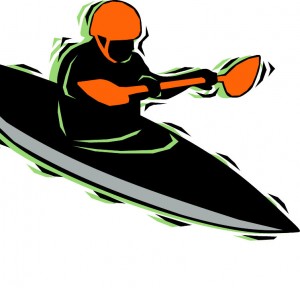Few things can bring as much pleasure and relaxation to an avid outdoorsman or woman than time spent on the water in either a canoe or kayak; this discussion focuses on canoeing. One of the secrets to getting the most out of  these activities is to hone one’s skill sufficiently to minimize effort and maximize time spent enjoying the beauty of the environment. By following some of the techniques discussed below, one can improve one’s paddle control on the water and, in term, derive an ever-increasing level of enjoyment from these pursuits. While it is certainly unnecessary for everyone who wishes to enjoy canoeing or kayaking to become an expert, paddle control will reduce frustration and make your experience more rewarding; furthermore, more advanced individuals should be able to further expand their skills by applying some of these techniques.
these activities is to hone one’s skill sufficiently to minimize effort and maximize time spent enjoying the beauty of the environment. By following some of the techniques discussed below, one can improve one’s paddle control on the water and, in term, derive an ever-increasing level of enjoyment from these pursuits. While it is certainly unnecessary for everyone who wishes to enjoy canoeing or kayaking to become an expert, paddle control will reduce frustration and make your experience more rewarding; furthermore, more advanced individuals should be able to further expand their skills by applying some of these techniques.
There are several ways to improve one’s paddle control, as well as several strokes that will help you to maintain greater control in guiding your vessel along in the water. These technique tips can be broken down into three main groups: hand position, body position, and stroke type. What follows is a brief discussion of each that can form the basis of increased enjoyment and understanding by novice to advanced canoe enthusiasts.
Hand Position
The maximum level of control over a canoe blade is achieved when one properly positions one’s hands on the paddle. The top hand should be placed over the top to allow for higher strokes and carefully shaped blade sweeps. The lower hand position will affect the power that one can achieve in one’s stroke. A wide grip will give greater power, while a narrow grip allows for greater maneuverability. Finding the correct balance between the two is largely a matter of experience, but is also affected by the type of stroke and conditions. For open lake strokes, where power is the priority and the strokes are slow, maximum control will come from a wide grip. In fast moving river conditions, however, the pivot action that is allowed by a narrower grip will improve one’s control. Ultimately, the ideal hand position will allow you to create a long stroke without bending significantly at the waist. By experimenting in calm water, you will be able to determine where this sweet spot exists for your individual needs.
Body Position
Maximizing paddle control, and ultimately control over one’s vessel, is as affected by body position within the canoe as it is by hand position on the blade. Many individuals who are piloting a canoe alone will find that kneeling in the canoe at the boat’s midpoint will produce the greatest level of stability. This position allows you to use your lower body to keep the canoe steady, which, in turn, allows for maximum paddle control. If the canoe remains stable, and you have easy access to each side of the boat, you will be able to achieve consistent and stable strokes that remain effective.
In cases where two or more individuals are piloting the canoe, and therefore seated in the bow and stern of the boat, hand position and body position may differ between the two occupants. The bow paddler will want to focus on propulsion; he or she should maintain an upright body angle and a wide grip on the blade. This will ensure maximum power and minimal shaking in the canoe. The stern will also maintain an upright body angle, but may select a narrower grip in order to allow for greater control in some of the strokes mentioned below.
The Control Stroke
Whether one is piloting the canoe alone, or serving as the navigator in the stern position, the “J” stroke is the most common way to maintain control over the vessel. To create a J stroke, the paddle is pulled backward as it normally would, but about halfway through the stroke, it is angled away from the canoe. This is done to counteract the effect of the early part of the stroke that pulls toward the canoe – the entire stroke will help to keep the canoe moving in a straight line. By incorporating navigation into one stroke, maximum paddle control is achieved, energy is conserved, and the overall experienced is enhanced.